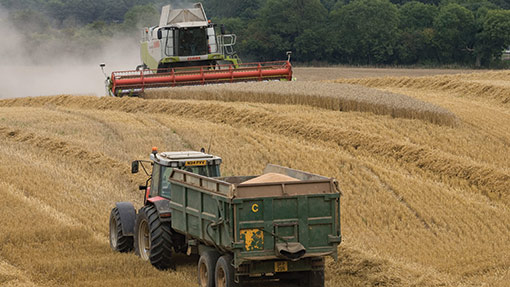Combining despite the rain in Notts

Robert Sutton is managing to cut spring barley at Skegby House, Marnham, Nottinghamshire, today (12 August), despite the recent showers.
“We had 35mm of rain on Sunday, but managed to cut barley at 18.5% moisture yesterday evening, and are on again today,” he said. “It’s going to be tricky, but I think it’s worth getting on and drying it to minimise any rain damage.”
Mr Sutton only drilled the spring barley after failing to get late winter wheat in, due to the wet conditions last year. “But I think we’re going to move more to spring barley because it’s the only serious blackgrass control mechanism we’ve got,” he said.
“We’ve tried everything else and it’s only worked sporadically, but two years of barley on the trot have given us huge control.”
With prices as low as they were, the gross margin was not great, he added. “But if you factor in that it allows us to farm at all, it’s almost priceless.”
See also: Cover crops aid soil structure in blackgrass battle.
Quartz oilseed rape yielded a reasonable 4t/ha, and a neighbour’s field – half of which had been sown in a long rotation after sugar beet and half of which was in a closer OSR rotation, produced 5t/ha and 3.2t/ha, respectively.
Mr Sutton had also managed to harvest some Diego and Horatio winter wheat, which had performed quite well, despite spotting and yellow rust in the latter.
“It will have done 11t/ha on the good bits – but we’ve only dipped into a few fields. The Diego did 9.5t/ha as a second wheat, which is good – but we were getting yields like this 20 years ago on an occasional basis,” he added.
Despite investing in the latest technology – in terms of machinery, chemicals, and varieties, Mr Sutton was frustrated at the lack of progress in yields over the past 30 years.
“In 30 years, our two lowest yields were in 2008 and 2012, with the best in 1999 and 2011. Thanks to our heavy investment in all the good things pressed upon us by the agricultural supply companies we have driven our yields up to the heady levels of the 1990s,” he said.
“Perhaps another couple of decades of their help will see us revisit the glory days of the 1960s when yields of 5t/ha seemed just out of reach.”

